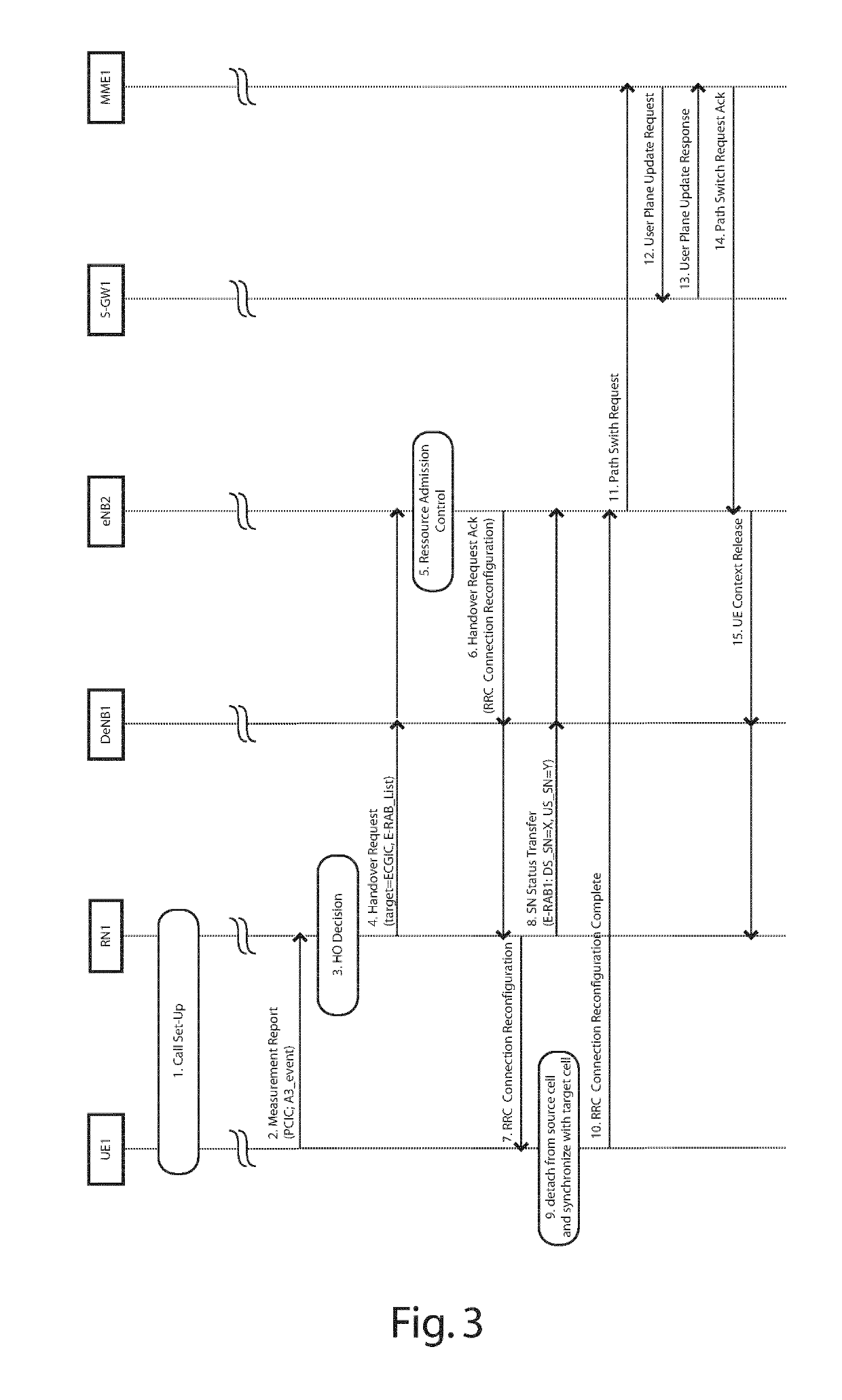In-sequence delivery of upstream user traffic during handover
a technology of user traffic and in-sequence delivery, applied in the field of in-sequence delivery of upstream user traffic, can solve problems such as severe impact on data transport, and achieve the effect of improving upstream user traffic forwarding
- Summary
- Abstract
- Description
- Claims
- Application Information
AI Technical Summary
Benefits of technology
Problems solved by technology
Method used
Image
Examples
Embodiment Construction
[0059]There is seen in FIG. 1 part of an LTE Public Land Mobile Network (PLMN) comprising the following network nodes:
[0060]an MME MME1,
[0061]a S-GW S-GW1,
[0062]3 eNBs RN1, DeNB1 and eNB2,
[0063]a UE UE1, such as a mobile terminal.
[0064]The eNBs DeNB1 and eNB2 are directly coupled to the MME MME1 and to the S-GW S-GW1 through an S1 interface. The eNB DeNB1 is a DeNB that wirelessly connects (via Un interface) the RN RN1 to the Evolved Packet Core (EPC). The DeNB DeNB1 acts as an S1 proxy for S1 connections between the RN RN1 and the MME MME1 and the S-GW S-GW1, and as an X2 proxy for X2 connections between the RN RN1 and further eNBs.
[0065]There is seen in FIG. 2 a radio coverage area comprising 3 cells A, B and C respectively operated by the eNBs RN1, DeNB1 and eNB2.
[0066]The 3 cells A, B and C are assumed to belong to the same Tracking Area (TA), and have PCIA, PCIB and PCIC as Physical Cell Identifiers (PCI), and further have ECGIA, ECGIB and ECGIC as Evolved Cell Global Identifie...
PUM
 Login to View More
Login to View More Abstract
Description
Claims
Application Information
 Login to View More
Login to View More - R&D
- Intellectual Property
- Life Sciences
- Materials
- Tech Scout
- Unparalleled Data Quality
- Higher Quality Content
- 60% Fewer Hallucinations
Browse by: Latest US Patents, China's latest patents, Technical Efficacy Thesaurus, Application Domain, Technology Topic, Popular Technical Reports.
© 2025 PatSnap. All rights reserved.Legal|Privacy policy|Modern Slavery Act Transparency Statement|Sitemap|About US| Contact US: help@patsnap.com



